Update: Oct-14-2023. If you need a great camera but have a tight budget and don’t want to spend a fortune, Here’s our guide to the best 4k camera under $500

Some people think about video cameras, they only consider the expensive ones. Not to say there’s something wrong with those, but if you’re looking for one for a cheaper budget-friendly price, the best 4k camera under 500 dollars will surely be of interest.
In line with the advancement of technology, the best 4K camera under $500 has become increasingly powerful, providing some fantastic features at a very affordable price. These cameras demonstrate that the best camera isn’t always the most expensive, as entry-level models can capture high-quality images, and the best cheap cameras are frequently lightweight and compact in design.
In light of this, how is it possible for camera manufacturers to produce high-quality cameras at such a competitive price? Another important reason is that cameras are becoming increasingly sophisticated as time goes on, which is one of the most compelling arguments in favour of using them. As a result, the rising tide lifts all boats, as features that were previously only available on the best DSLRs or best mirrorless cameras are now standard across the board. As a result, features such as Wi-Fi, 4K video, and sensors with respectable megapixel counts have become much more common in recent years.
Another reason why low-cost cameras have become so good in recent years is that many manufacturers continue to sell their older models for an extended period of time after they have retired from the market. When it comes to cameras, this means that consumers can get a great deal if they aren’t too concerned with having the most up-to-date model on the market. The A6XXX mirrorless camera range and Sony’s RX100 compact camera range both have large back catalogues of cameras that are still relatively easy to find and at some fantastic prices, which we think is particularly noteworthy in this context.
More information can be found at The Best Camera for Kids.
So, what exactly can you expect to get for your £500 budget? According to your preferences, you should be able to find a reasonably advanced compact camera, an enthusiast-focused mirrorless camera, or a decent entry-level DSLR in your price range.
Keep in mind that, as camera prices fluctuate, you may find a camera on our list that is a little more expensive (or significantly less expensive!) than your budget. However, every camera model on this list has been selected because it offers a fantastic combination of features at an affordable price, so we are confident that we will put you in the right ballpark in terms of budget.
Because cameras are not a one-size-fits-all product, the best 4k camera under $500 for you will be determined by the purposes for which you intend to use it. However, each of the models listed below is a standout product in its respective category, so you’ll be sure to find something that meets your requirements among them.
Here is a list of the Best 4k Camera Under Dollar 500
1. Nikon D3500 – Best 4k Video camera under dollar 500
Nikon’s newest DSLR is cheap, easy to use and very good
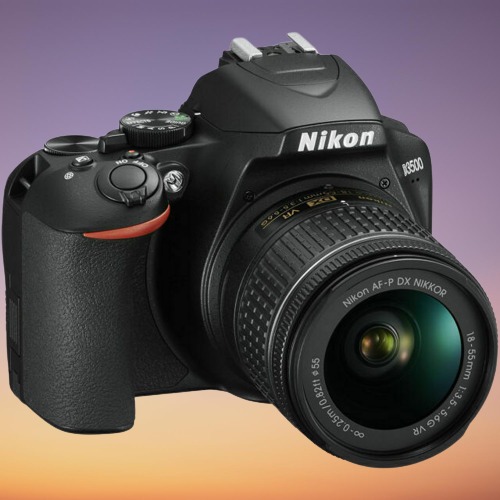
SPECIFICATION
- Camera type: APS-C (DX) format DSLR
- Announced: 30th August 2018
- Lens mount: Nikon F
- Sensor: 24.2Mp APS-C (23.5 x 15.6mm)
- Sensitivity range: ISO 100-25,600
- Autofocus system: Viewfinder: 11-point with 1 cross-type, Live View: Contrast detection
- Maximum continuous shooting rate: 5fps (frames per second)
- Viewfinder: Optical with pentamirror 95% coverage
- Screen: 3-inch TFT LCD with 921,000 dots
- Storage: SD/SDHC/SDXC UHS-I
- Dimensions: 124 x 97 x 69.5mm
- Weight: 365g body only
While much of the D3500’s best 4k camera under $500 specification is carried over from the D3400, there are a few notable differences. For starters, the D3500’s 24.2Mp APS-C format sensor is a first for Nikon (although it has the same effective pixel count as the previous chip). Aside from that, it is a little lighter than the D3400 and its battery lasts a few more shots than the D3400. Nikon has also tweaked the design of the D3400 in comparison to the previous model.
Although the D3500 does not feel quite as durable as cameras further up Nikon’s DSLR line, it is still a respectable entry-level model in terms of build quality. The grip is particularly strong and deep, which is a nice addition. Nikon has made the body as thin as possible so that the deep grip does not add to the overall size of the camera.
The inclusion of a vari-angle touchscreen would be desirable but would raise the price of the D3500 significantly. It is intended to serve as an entry-level, reasonably priced option.
Nikon, on the other hand, hasn’t scrimped on the sensor, and the camera produces high-quality images with a high level of detail. The camera has also been designed to assist beginners in capturing acceptable images in a variety of situations.
The Nikon D3500 is a modern classic when it comes to entry-level cameras, and anyone looking for a reliable camera with which to learn and grow should look no further.
Panasonic Lumix GX9 – best 4k camera under 500
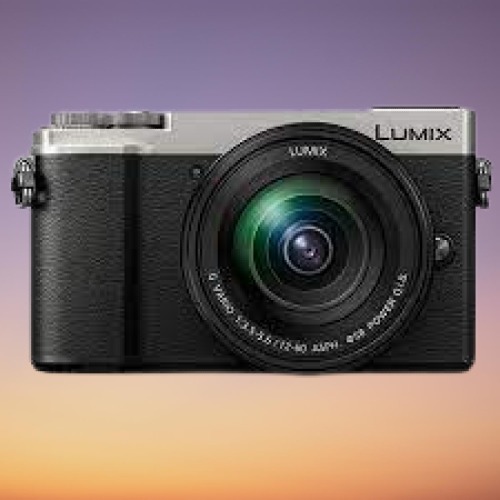
SPECIFICATION
- Sensor: 20.3-megapixel Micro Four Thirds
- Stabilisation: Sensor-Shift, 5-Axis
- Sensitivity: 200 to 25600 (Extended: 100 to 25600)
- Video: UHD 4K (3840 x 2160) at 24.00p/29.97p [100 Mb/s]
- Viewfinder: 2,760,000-dot EVF
- Monitor: 3-inch 1,240,000-dot tilting touchscreen
Panasonic introduced the GX9 a few years ago as a “premium street photography camera” that would sit in the middle of the company’s lineup. As a result of its small body size and flat rangefinder-style design, it is also an excellent travel camera, especially if you already own another Micro Four Thirds camera.
It is equipped with a 20.3 megapixel Four-Thirds sensor that does not have an anti-aliasing filter, allowing for greater detail resolution. It also boasts a slew of other appealing features, such as a high-resolution tilting viewfinder, a tilting touch-sensitive LCD screen, 4K Photo and Video modes, and compatibility with a wide range of Micro Four Thirds lenses, among others.
The camera’s appearance is also very stylish, and it does not draw too much attention when it is being used in public, which is an excellent feature. The camera has a good mix of buttons and dials, and the tilting screen comes in handy when you’re trying to compose from awkward angles.
Most importantly, overall image quality is excellent, especially in well-lit or bright environments. Generally speaking, colours are accurately reproduced, appearing natural while also vibrant, and focusing is quick and accurate.
It is just barely within our target price range here, but the GX9, body only, is a camera that you will fall in love with in no time. This is probably my favourite of the cameras on our list of the best cameras under £500 / $500 in terms of value for money.
Read Also : Best Camera For Music Videos – New 2023 Guide
GoPro Hero9 Black – 4k camera under 500
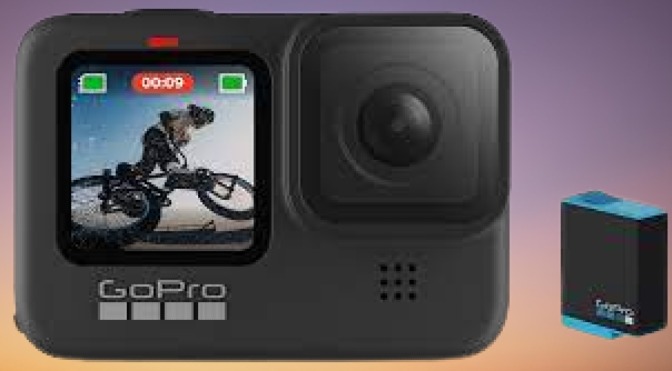
SPECIFICATION
- Camera type : Action Camera
- Announced: 16th September 2020
- Max video resolution and frame rate: 5k 30p, 4K 60p, 2.7K 120p, 1440 120p, 1080 240p
- Video file formats: MP4 (H.264/AVC), MP4 (H.265/HEVC)
- Max photo resolution: 20mp
- Max bit rates: 100Mbps (2.7K, 4K, 5K)
- Screen: Rear: 2.27-inch touchscreen, Front: 1.4-inch colour screen
- Livestreaming: 1080p
- Voice control: 4 commands in 11 languages + 6 accents
- Battery: Removable, rechargeable 1720mAh lithium-ion
- Storage: MicroSD USH-I
- Connectivity: Wi-Fi, Bluetooth
- Stabilisation: Hypersmooth 3.0
- Waterproof: To 10m / 33 feet
- Dimensions (WxHxD): 71 x 55 x 33.6mm
- Weight: 124g
It’s the most significant update to the GoPro Hero Black line we’ve seen since the Hero5 Black was introduced in September 2016, and it’s available now.
Apart from being significantly larger, the Hero9 Black offers 5K video and 20MP stills capabilities, as well as a 30 percent longer battery life and even better stabilization than the previous model. Despite the fact that we appreciate the technical advancements, the beefed-up body of the GoPro Hero9 Black has one significant drawback: it is not compatible with the MediaMod module that was first introduced with the GoPro Hero8 Black.
In contrast, the Hero9 Black is the most advanced action camera that GoPro has ever created, and its Hypersmooth 3.0 stabilization system, which includes in-camera horizon levelling, is fantastic.
While the ability to shoot in 5K is appealing, the fact that it is limited to 30fps is a little – well, limiting – but the quality of the footage that the Hero9 generates at other settings is a significant improvement over the Hero8’s performance.
Another piece of good news regarding the GoPro Hero9 Black is that the removable lens is back in action. As a result, if it takes a dive and gets scratched, you have the option of changing it. GoPro has also promised a Max Lens mode that will provide a 155-degree field of view, but we have yet to see this in action.
The front screen has also been upgraded to include colour and the ability to display a preview of what the camera is seeing. That’s ideal for capturing yourself in action on video.
We here at Jabber HQ are so taken with the GoPro Hero9 Black that we’ve all decided to purchase one. Yes, we paid our hard-earned money and received one for each of us. Which additional endorsement would you like to receive?
Olympus OM-D E-M10 Mark III

SPECIFICATION
- Camera type: Mirrorless
- Sensor: 16.1Mp Four Thirds type (17.3 x 13mm) CMOS
- Processing engine: TruePic VIII
- Sensitivity range: ISO 200-25,600
- Autofocus system: Contrast detection with 121 points
- Max continuous shooting rate: 8.6fps in S-AF
- Max video resolution: 4K at 30, 25 or 24p with 102Mbps
- Storage: SD/SDHC/SDXC
- Viewfinder: Electronic OLED with 2,360,000 dots
- Screen: Touch-sensitive tilting 3-inch OLED with 1,037,000 dots
- Dimensions: 121.5 x 83.6 x 49.5mm
- Weight: 362g body only
OM-D E-M10 Mark III is a small mirrorless camera with a Micro Four Thirds lens mount and a 16.1MP Four-Thirds type (17.3 x 13mm) CMOS sensor. It is equipped with a Micro Four Thirds lens mount. It has a mini-DSLR design with an electronic viewfinder built-in, as well as a 3-inch, 1,037,000-dot tilting touch-screen with 1,037,000 dots.
Its small size and advanced shooting options make it an appealing option for experienced photographers who want to travel light, while its beginner-friendly modes make it a good choice for those who are just starting out.
Despite its compact size, it offers a wealth of features, including a built-in viewfinder, a touchscreen with a tilt function, Image Stabilization, and a variety of creative options, such as Live Time and Live Composite mode.
Given that it is a mirrorless system camera, the E-M10 III’s viewfinder and LCD screen allow you to see the image as it will be captured with the camera settings in place, which is beneficial for both beginners and experienced photographers.
Despite the fact that the E-M10 III’s sensor has 16.1 million effective pixels, it does not break any new ground in terms of resolution or image size, it produces pleasing jpegs that will satisfy the majority of photographers in a variety of situations.
Canon EOS Rebel SL3 / 250D-best 4k camera under $600

SPECIFICATION
- Camera type: DSLR
- Announced: 10th April 2019
- Sensor: 24.1Mp APS-C CMOS
- Lens mount: Canon EF-S
- AF System: 9-point phase detection, Dual Pixel CMOS AF (via Live View or Video)
- Viewfinder: Pentamirror 95% coverage optical viewfinder
- Screen: 3-inch vari-angle touchscreen with 1,040,000 dots
- Max video resolution: 4K (3840 x 2160) at 23.98, 25fps
- Dimensions (W x H x D): 122.4 x 92.6 x 69.8mm
- Weight: Black/Silver 449g, White 451g
The Canon EOS 250D, also known as the EOS Rebel SL3 and the EOS Kiss X10, is a digital SLR camera that is intended for beginning photographers. It has a few more features than the Canon EOS 2000D (EOS Rebel T7) and EOS 4000D, which are both DSLR cameras that are intended for intermediate photographers.
With an APS-C format 24.1-megapixel Dual Pixel CMOS sensor, 4K video technology, and a vari-angle touch-screen, it’s also the smallest DSLR to feature a moveable screen.
Also noteworthy is that it is a capable little camera, capable of capturing subjects in sharp focus quickly and capturing images that are attractive and full of detail. To be more specific, it’s one of the top entry-level DSLRs on the market.
Olympus Pen E-PL9 – best 4k video camera under $500
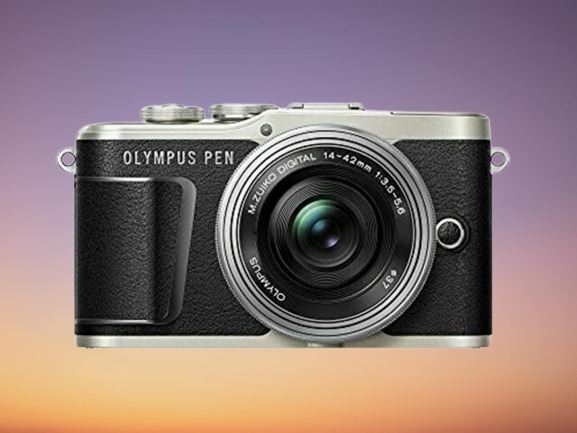
SPECIFICATION
- Camera type: Mirrorless
- Sensor: 16.1Mp Four Thirds Type Live Mos
- Lens mount: Micro Four Thirds
- Processor: TruePic VIII
- Sensitivity range: ISO 100-25,600
- Autofocus system: Contrast detection with 121 points
- Max shooting rate: Mechanical shutter: 8.6fps in S-AF, 4.8fps in C-AF; Electronic shutter: 14.1fps in S-AF, 61.fps in C-AF
- Max video resolution: 3840 x 2160 (4k) / 30p, 25p, 24p / IPB (approx. 102Mbps)
- Storage: SD/SDHC/SDXC UHS‑I
- Viewfinder: None
- Screen: Tiltable 3-inch 1,040,000-dot touchscreen
- Dimensions (WxHxD): 17.1 x 68 x 39mm
- Weight: 332g body only, 380g including battery and memory card
This is Olympus’s entry-level camera, and while it shares the same 16-megapixel Micro Four Thirds sensor as its predecessor, the PEN E-PL8, it does offer some significant improvements over its predecessor.
To begin, 4K video can now be recorded at 30, 25, and 24 frames per second, and Full HD video can now be recorded at 60 frames per second.
The 4K video recording is accompanied by a vlogger-friendly 3-inch, 1,040k-dot touchscreen that can be articulated 80 degrees up or 180 degrees down on its bracket for taking selfies and vlogs. Its 4K at 30 frames per second performance, in particular, is quite impressive for a camera of this size and price.
There’s also a new High-Speed Video mode for capturing slow-motion movies, as well as a Clips Video mode for capturing 4-second movies. You can also use the camera’s art filters and a variety of other effects to enhance the look of your videos.
There are also new art filters, more AF points, and Olympus’ new TruePic VIII image processor, which was inherited from the company’s flagship E-M1 Mark II camera. Bluetooth connectivity is also included for the first time in an Olympus camera.
The PEN E-PL9 is an excellent choice if you want a camera that allows you to record spontaneous videos for sharing, much like you would with your smartphone, but with better quality and greater control than you would with your smartphone.
Best Compact Camera Under 500
Unlike in the past, purchasing a low-cost camera does not imply a willingness to accept poor image quality. With plenty of resolution, including 4K video, the best cameras under £500 / $500 are now available. This is due to the technological advancements of the last decade, which have allowed flagship features to trickle down to entry-level models from higher-end models. Even those former flagship models are now available for purchase at a fraction of their former retail prices.
For the most part, as we are all probably well aware, the photography industry can be a very expensive business. We all want to have the latest and greatest photography equipment – but in this guide, we’ll look at some of the best cameras under 500 / $500 to demonstrate that you don’t necessarily need the most expensive model on the market to get the features you need for your photography hobby.
We understand that £500 / $500 is not a small sum of money, but it is at this price point that you can get something that provides both impressive image quality and excellent handling.
We’ve compiled a list of both mirrorless and DSLR cameras for your consideration. The majority of the cameras on this list come with a lens, allowing them to achieve the magic sub-£500 / $500 price tag. Throughout the year, keep an eye out for manufacturer promotions, as they frequently offer cash-back deals – especially around Black Friday and Christmas holidays.
DJI Osmo Action

The DJI Osmo Action is a small but incredibly powerful action camera that, thanks to its RockSteady stabilisation system, is capable of capturing beautifully smooth 4K footage. This camera, which is priced below that of the most recent GoPro HERO cameras, is an incredible bargain and comes with a host of features that you’d expect from a camera in its class, such as waterproofing down to 11 metres (33 feet). Dual LCD screens are also useful for taking selfies and vlogging because they allow you to see what you’re shooting from both angles at the same time. It also has the capability of shooting video in super slow motion (up to 8x). An all-around winner at an extremely reasonable price.
Sony A6000 – best 4k 60p camera
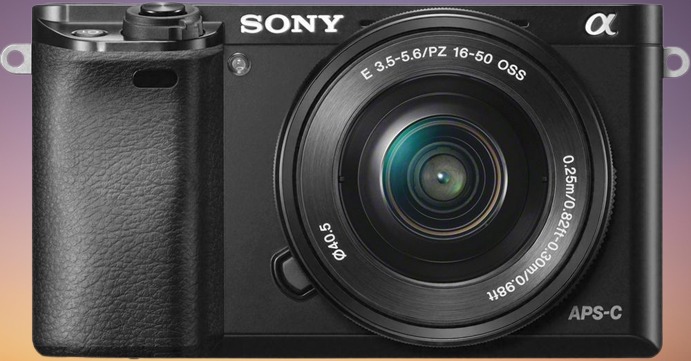
Sony’s excellent A6400 and A6600 cameras may be out of reach for some, but the A6000 is a highly capable alternative that is well within budget. In fact, according to the company, it is the best-selling mirrorless camera it has ever produced. Despite the fact that it lacks the 4K video capability of its elder siblings, it comes with a slew of features you wouldn’t expect to find on a DSLR of this price range.
These features include a whopping 179 phase-detect AF points, which make subject tracking a breeze, as well as 11 frames per second burst shooting. Simply having that combination should make the camera very appealing to sports and action photographers, and the tilting LCD screen, 2.36 million-dot OLED viewfinder, built-in Wi-Fi, and NFC functionality only serve to sweeten the deal even more.
Olympus OM-D E-M10 II – digital camera under 500

Photographers who enjoy shooting with their digital cameras have embraced Olympus’ digital revival of its analogue OM line in recent years, and with the release of the OM-D E-M10 II, the company has provided those on a tighter budget with an affordable entry point into the series. That the model shares so many characteristics with the more senior OM-D E-M5 II is a bit of a surprise.
They both have 16MP sensors, TruePic VII processors, 2.36 million-dot electronic viewfinders, and five-axis image stabilization systems, for example. Sure, not everything is equal, but when you factor in the significant price difference between the two models, the OM-D E-M10 II ends up being the better-value model by a significant margin—especially now that its successor, the Olympus OM-D E-M10 III, is being discounted, further reducing the price of the OM-D E-M10 II’s predecessor.
Sony Cyber-shot RX100 III-
best streaming camera under 500

The original Cyber-shot RX100 was a watershed moment in the history of compact cameras, with its large 1 sensor, a slew of features, and a small body that allowed it to fit comfortably in a pocket. With a 20.1-megapixel sensor and a fast f/1.8–2.8 3x zoom lens equivalent to 24-70mm in full frame terms, this third-generation camera is a step up from the previous two generations.
It even comes with a built-in electronic viewfinder that pops up. In the meantime, Sony has announced RX100 models all the way up to the VII, many of which include competitive features such as a longer zoom range. However, we believe the RX100 III remains the sweet spot for power versus price.
Panasonic Lumix TZ100
4k cameras under 500

Pocketable compact cameras with one sensor are desirable for the quality of their images, but these rarely offer lenses that exceed 100mm or so. The only exception to this is Panasonic’s Lumix TZ100, which partners its 20MP 1″ sensor with a surprisingly long 25-250mm f/2.8–5.9 optic. True, in order to accommodate this, it’s a little bulkier than the average compact, and not all that bright at its telephoto end, but if size and telephoto reach are your priorities, then you’ll be hard-pressed to find something more suitable.
And that’s only the start; with a small electronic viewfinder, 4K video recording, Raw shooting and a five-axis OIS system to help keep images sharp and videos stable, it’s got masses going for it aside from its headline specs. Plus, with the TZ200 out now, its price has dropped even further!
Frequently Asked Questions- best video camera under 500
What is the best camera you can get for less than $500?
That is somewhat dependent on your personal preferences. For less than $500, you can get a reasonably good digital SLR camera, mirrorless camera, or compact camera, depending on your needs. When it comes to weighing all of the options, however, the Sony a5100 is our top pick because it is small and lightweight, and it provides the most value for your money.
Which camera produces the highest-quality images?
If you’re looking for a camera that produces vibrant, punchy, and crisp images in the sub-500 dollar range, the Sony a5100 is still a great choice because it produces images that are vibrant, punchy, and crisp. The Nikon D3400 is a good choice if you want something a little more substantial. As a DSLR option, it provides excellent image quality – even when using the included kit lens as the primary lens.
What is the best type of camera to use?
Each has its own set of advantages. DSLR cameras, for example, are frequently more dependable, more ergonomic, and have longer battery lives. Compact cameras are exactly what they sound like: they are small. Mirrorless cameras, on the other hand, are the most up-to-date technology, and you can expect them to become increasingly popular. When it comes to cameras, mirrorless may be the best option if you want something small and lightweight that is also powerful and has plenty of future expansion and upgrade possibilities.
What is a good entry-level low-cost camera for beginners?
The Nikon D3400 is a mid-priced DSLR that falls into the sub-$500 price range and includes a highly useful “beginner mode” that walks you through a variety of situations. The Sony RX100 is another excellent choice for first-time photographers on a tight budget, thanks to its excellent Auto mode, which you can use to get a feel for the camera before learning all of the manual settings.

1 thought on “Best 4k Camera Under $500 – in 2023 Detailed Review”